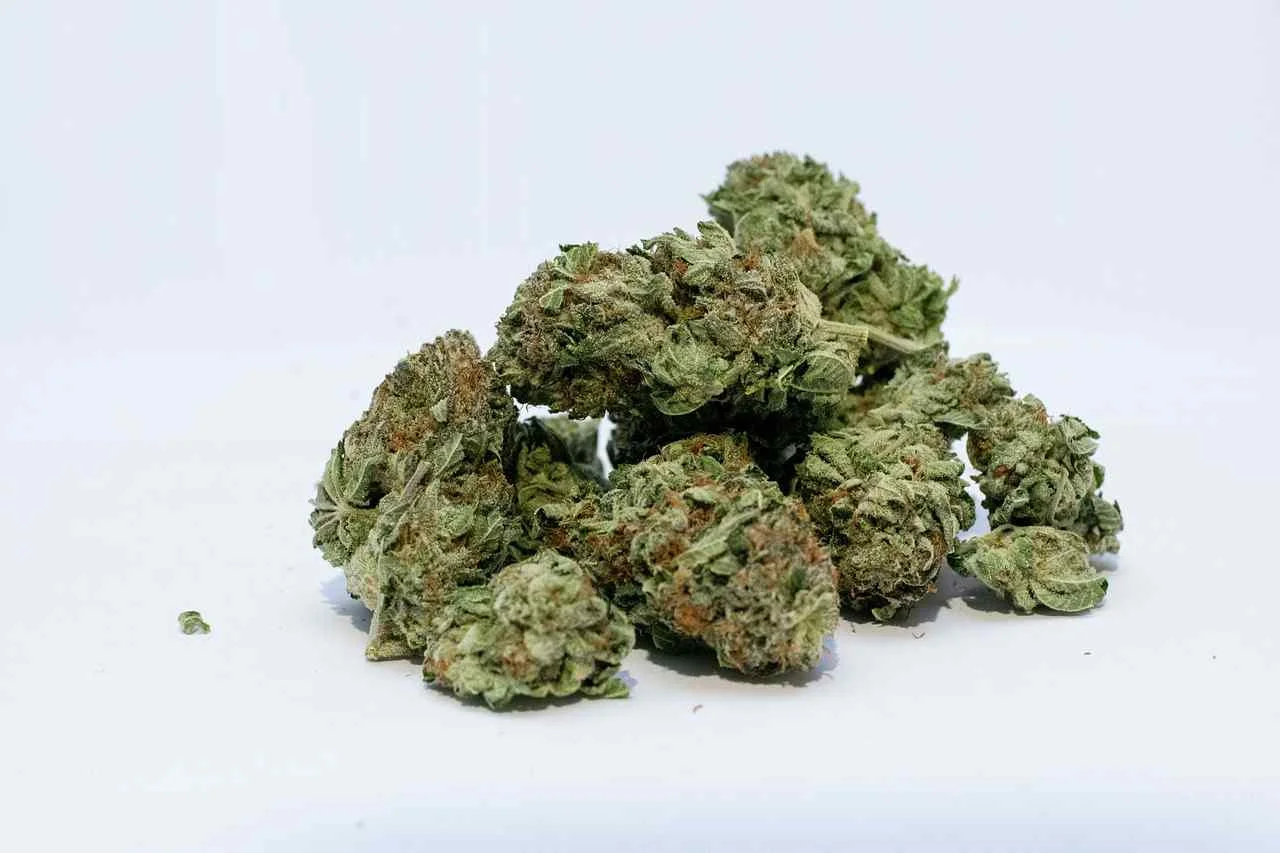Spice
Spice is one of the multiple street names for the synthetic cannabinoid drugs that are manufactured to mimic the effect of tetrahydrocannabinol (THC), the main psychoactive component of marijuana.

Other Names: Synthetic Cannabinoids, Synthetic Marijuana, Synthetic Cannabis, K2, AK-47, Bombay Blue, Black Mamba, Bliss, Blaze, Crazy Clown, Cloud 9, Dawn Scooby Skunk, Demon, Dream, Fake Weed, Fire, Genie, Kush, Kronic, Kaos, Legal Weed, Moon Rock, Mr. Happy, Mr. Nice Guy, Mojo, Paradise, Red X, Redx Dawn, Scooby Snax, Solar Flare, Skunk, Sence, Smoke, Smacked, Serenity, Yucatan, Zohai
Because of their similarity to marijuana, synthetic cannabinoids are sometimes misleadingly referred to as “synthetic marijuana” or “fake weed,” and they are often promoted as a natural, safe, and legal alternative for marijuana. However, it is worth noting that synthetic cannabinoids are not completely safe. In fact, their effects are often much more potent and more dangerous than marijuana.
Spice is listed as a Schedule I drug under the U.S. Controlled Substances Act, which means it has a high potential for abuse and dependence.
How Is Spice Used and Abused?
Spice currently has no accepted medical use in the United States. Synthetic cannabinoids were initially developed for cannabinoid research, since natural cannabinoids were difficult to obtain due to legal restrictions.
Most of those who use and abuse spice smoke the drug, rolling it in papers much like one would do when using marijuana. The powder form of spice is frequently mixed in food, herbal teas, and other beverages; meanwhile the liquid form is usually added to the “juice” used in e-cigarettes.
There are also dealers who spray or mix spice with plant material that can serve as vehicles for the drug, and then they sell these products as potpourri or incense.
Drugs That Interact With Spice
It is unclear yet whether the same drugs that interact with natural cannabinoids also interact the same way with spice. This is because while synthetic cannabinoids resemble or mimic marijuana, they’re mechanisms of actions aren’t exactly the same. A good example here is how, while synthetic cannabinoids like spice are full agonists of the body’s cannabinoid CB1 and CB2 receptors, natural THC is only a partial agonist.
Moreover, users of spice don’t really know what chemicals are in the products they are using, and what their exact effects may be. The name “spice” or “K2” is used to refer to a wide array of products that mostly contain at least one type of synthetic cannabinoid or a combination of them. They can also be mixed with other drugs such as stimulants and depressants.As such, it can be dangerous to combine spice with even more drugs.
Spice Side Effects
Many of the common effects of synthetic cannabinoids are similar to those of marijuana. These may include:
- Feelings of relaxation
- Euphoria
- Altered perception
- Psychosis
The following side effects may also occur:
- Increased heart rate
- Elevated blood pressure
- Nausea and vomiting
- Agitation
- Confusion
- Hallucinations (seeing or hearing things that are not real)
- Anxiety
- Paranoia
- Headache
- Numbness and tingling
- Reduced amount of blood going to the heart
- Heart attack
- Seizures
The onset of these harmful consequences depends on several factors, like the dose of the drug taken and length of its use. Using spice can also lead to dependence and addiction.
Acute poisoning from synthetic cannabinoids can also manifest in the following adverse effects:
- Delirium/toxic psychosis
- Bradycardia or slow heartbeat
- Tachycardia or fast heartbeat
- Respiratory depression
- Acute kidney injury
- Rhabdomyolysis, in which skeletal muscle fibers break down and the fibers leak into the blood
- Metabolic syndrome
- Gastrointestinal and hepatic (liver) issues
- Significant leukocytosis, where you have too many white blood cells
- Sedative-hypnotic effects
Long-Term Effects of Spice
Those who abuse spice may suffer from long-term side effects like kidney damage and psychosis.
Symptoms of Spice Overdose
Spice overdose can manifest in the following symptoms:
- Agitation
- Anxiety
- Seizures
- Stroke
- Heart attack
- Organ failure
- Coma
It is important to contact emergency medical services right away if you suspect that you or someone you know has suffered an overdose on spice.
Signs of Spice Addiction
The Diagnostic and Statistical Manual of Mental Disorders, Fifth Edition (DSM-V) lists 11 criteria for substance use disordera. The following symptoms may be observed on individuals who have spice or synthetic cannabinoid addiction:
- Taking spice in increasingly large amounts or for longer than intended
- Attempting or wanting to minimize or stop using spice, but being unsuccessful
- Spending considerable time obtaining and using synthetic cannabinoids or recovering from use of it
- Intense cravings for spice
- Using spice results in difficulty or failure to manage commitments at home, school, work, or other settings
- Continuing to use spice even if the habit is causing relationship problems
- Giving up important activities in favor of using synthetic cannabinoids
- Continued spice use despite knowing that it can put you and others in danger
- Continued spice use even if the habit makes physical or psychological problems worse
- Increasing tolerance to the drug, which means taking higher and higher doses to experience the desired effect
- Experiencing withdrawal symptoms upon abruptly stopping spice consumption
It is important to remember not to use these criteria to self-diagnose. If you suspect that you or a loved one is experiencing the above-mentioned symptoms of addiction, seek help from a professional treatment center immediately.
Symptoms of Spice Withdrawal
Some of the common signs of spice withdrawal include:
- Anxiety
- Depression
- Headaches
- Irritability
The safest way to stop using spice is to undergo detoxification. Consult a medical professional or, if you’re able to, visit a medical detox facility right away to learn more about your options.
Spice Detoxification
Undergoing a medically supervised detoxification is the most effective way to stop using spice. With a customized detox program, you will be able to get rid of all the traces of synthetic cannabinoids in your body. You will also receive medical attention to help you manage dangerous withdrawal symptoms.
Some of the things you can expect when you undergo detox for spice include:
- A gradual lowering of the synthetic cannabinoids you consume. The schedule will depend on your physical condition and the severity of your symptoms.
- You may be given symptomatic medications, IV fluids, and nutritional supplements to restore your body’s health.
- You will receive constant monitoring from medical professionals to ensure the success of the detox program. They will also offer support so that you can feel safe and comfortable throughout the process.
Rehabilitation and Treatment for Spice Addiction
Recovering from spice addiction isn’t as simple as merely stopping the use of the drug for several days. Instead, you need professional medical treatment in a rehabilitation facility. This way, you can cease drug use in a safe manner, maintain long-term sobriety, and regain productivity.
There are currently no FDA-approved medications to treat spice addiction. However, you or your loved one can opt for inpatient or outpatient care in order to receive the right kind of medical attention and interventions to beat addiction.
- Inpatient spice addiction treatment. This type of treatment set-up is ideal for those who are experiencing a severe case of spice addiction and have a high risk of treatment non-compliance. Inpatient treatment is also often called “residential treatment” because you will be living in the rehabilitation facility for the entire duration of the program. You will also receive round-the-clock care from medical professionals, including a combination of medications and psychological therapy.
- Outpatient spice addiction treatment. If you have a milder addiction case and can commit to comply with the treatment program, you may be recommended an outpatient treatment set-up. This allows you to continue your usual living arrangements and routines, including going to work or school. The biggest change is that you will be required to visit the rehab center several times a week. Outpatient addiction treatment is ideal if you’re surrounded by a strong support system at home and in your community.
Get the Help You Need Today
You don’t have to deal with spice addiction alone. Call Better Addiction Care today at (800) 429-7690 to speak to a recovery support advisor, who can assist you in finding the most suitable facility where you can receive the best treatment options and achieve sobriety.
Better Addiction Care’s recovery support advisors can also help verify if your existing insurance policy has coverage for inpatient or outpatient treatment. If you currently don’t have insurance, our advisors can also help you find other financing options.
A Brief History of Spice
One of the first synthetic analogues of THC called HU-210 was synthesized in Israel in 1988. It has a similar chemical structure to THC, which is why it is considered a “classical cannabinoid.” However, HU-210 is considered to be 100 times more potent.
Another group of synthetic cannabinoids, which are termed “non-classical,” were developed as potential analgesics by Pfizer in the 1980s. These synthetic cannabinoids were cyclohexylphenols or 3-arylcyclohexanols, otherwise known as CP compounds.
More synthetic cannabinoids emerged soon after. These induce aminoalkylindoles, phenylacetylindoles, and benzoylindoles. Aminoalkylindoles are considered the most prevalent, often found in herbal products laced with synthetic cannabinoids.







